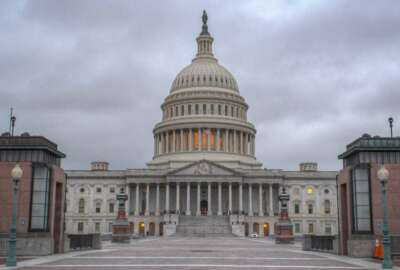
The autumn numbers game
In addition to the ever-present threat of a shutdown, it’s when federal workers go shopping for next year’s all-important heath insurance.
Fall, as per usual, should be a stimulating time for members of the federal family whether they are still working or retired.
In addition to the ever-present threat of a shutdown, maybe for lack of appropriations or maybe for political reasons, it’s the period when workers go shopping for next year’s all-important heath insurance. It’s when retirees learn how much, if any, their January cost of living adjustment will be. The final COLA figure depends on the rise in living costs from the third quarter of this year (July, August, September) over the third quarter of the previous year. With two months to go in the countdown it is up 1.6%. But don’t budget for it yet.
On the pay front the picture is, as per usual, muddy. The White House said there should not be an across-the-board raise. Rather it wants to implement a plan — remember pay-for-performance — whereby top-notch workers get bigger raises. While that sounds good whichever administration proposes it, unions and many long-time civil servants find it problematic to say the least.
Currently the Democratic-controlled House has OK’d 3.1%. The GOP-led Senate has been silent on a pay raise. That issue is still be be decided, and anything, including nothing, could happen.
Last but not least are the health insurance premiums you will pay next year whether you have a self-only plan, a self-plus-one plan or a self-and-family plan. Many people who lobbied for years for a self-plus one option were disappointed to discover what the experts said all along — that its premiums wouldn’t be that much lower than a self-only plan. That pattern is expected to continue in 2020 with self-only and self-plus plans having very similar premiums.
The big problem is shopping.
Most people don’t do it, even though many government agencies buy them online guides and shopping tools and permit workers to comparison shop on the job. Despite this, and the long time workers have to shop 1 Nov. 11 to Dec. 9 this year — only about 6 of every 100 people change plans. Experts say many more people should change because they could get similar-to-better coverage by switching to a different plan or even a different option of their current plan. This year premiums went up an average of 1.6%. That was the lowest overall increase in years.
Bottom line: The way the numbers line up, COLAs, pay raises and premium increases will determine how much you have to spend next year — always an interesting exercise.
Nearly Useless Factoid
By Amelia Brust
The origins of the “no white after Labor Day” fashion rule are not entirely certain but the likely source is late 19th century high society. As a way to distinguish old money from the nouveau riche, white was the de facto uniform of those who could escape urban dwellings in favor of the country or seaside in the summer. White became the color of leisure at upscale resorts but after Labor Day, these rich travelers strictly put their summer clothes away in favor of darker, heavier fall and winter apparel. By the 1950s it morphed into a firm etiquette rule. But that rule has always been broken and now is ignored by fashion elites.
Source: Marie Claire
Copyright © 2025 Federal News Network. All rights reserved. This website is not intended for users located within the European Economic Area.
Mike Causey is senior correspondent for Federal News Network and writes his daily Federal Report column on federal employees’ pay, benefits and retirement.
Follow @mcauseyWFED




